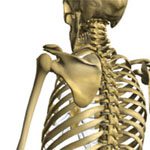Cervical Spine


There are seven vertebrae that make up the cervical spine, C3 through C7. Nerves passing through this area can be affected by subluxations altering the neck muscles, the shoulder, the arms, and the hands. These subluxations can result in neck pain, arm pain, numbness, stiffness, bursitis, and scores of other possible musculoskeletal problems.
Nerves originating in the Cervical Spine also control the throat, sinuses, nose, thyroid gland, lymph nodes, diaphragm, and more. Subluxation affecting this area of the spine can result in a variety of systematic and functional problems.
In order to function as intended, it is very important that the nerves passing through the Cervical Spine conduct proper signals to the organs, systems, muscles, joints, and other tissue. Otherwise, the result can be less than optimum function of the bodyÕs systems.
Just as can happen in any area of the spine, subluxation in the Cervical Spine can result in an imbalance in other areas of the spine, too. These imbalances can result in postural and functional problems throughout the body.



